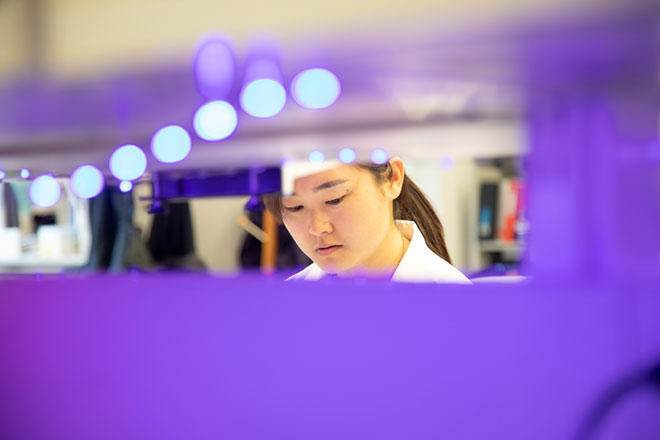Research

Research Highlights
- Johns Hopkins researchers pioneered research that defined cancer as a genetic disease. These discoveries led to the first genetic tests for a hereditary cancer and a screening stool test for colon cancer.
- Johns Hopkins investigators completed the first map of a cancer genome, deciphering the genetic blueprints for colon, breast, pancreatic, adult and pediatric brain cancers.
- Personalized genome sequencing: of the cancers for which all genes have been sequenced, most have been done at the Kimmel Cancer Center. These discoveries have paved the way for personalized therapies with our investigators undertaking the first use of personalized genome scanning to reveal the gene mutation that caused a person’s inherited form of pancreatic cancer.
- Working to understand the effects of methylation patterns on genes, the hallmark of epigenetic alterations, our scientists have used this molecular trail of evidence to develop broad-based cancer screening tests, monitor patients for cancer progression and recurrence, and to determine surgical margins by revealing cancer cells invisible to the human eye. Research linking DNA methylation to the leukemia precursor myelodysplastic syndrome led to the first FDA approval of a demethylating agent and earned the team recognition from the NCI for the most outstanding research in the SPORE program.
- Kimmel Cancer Center researchers were among the first to develop therapeutic cancer vaccines. The Center is home to a GMP facility that allows scientists to produce the vaccines for clinical trials. Among the most successful of the vaccines is a pancreas cancer vaccine that turns on the immune system and leads immune cells, typically blind to cancer, to attack cancer cells in the pancreas and throughout the body was developed here. Other vaccines for cervical cancer, prostate cancer, and leukemia also were developed here.
- Kimmel Cancer Center researchers were among the first to perform bone marrow transplants to treat blood and immune-forming cancers. Now, they have expanded upon this early expertise becoming the first to perform haploid (half)-identical transplants, increasing the number of patients who can take advantage of the curative therapy. Breakthroughs managing graft vs. host disease have made transplants possible for patients who do not have identical donor matches.
- Unique collaborations among leaders in science and medicine as well as engineering, physics, and other disciplines have allowed our Center investigators to tackle problems of great scope and obtain solutions that would not otherwise be possible.
